The glory of Armenian cuisine enlarges beyond the Armenia’s borders. The history of the Armenian cuisine started more than 2000 years ago. That is the reason why some cooking techniques are so complicated. Armenian Cuisine reflects the history and geography where Armenians lived. They also shared outside influences from other countries.
Armenian dishes have interesting tastes. One of the advantages of the Armenian food is that it still includes organic ingredients. Armenian cuisine occupies a unique place in the Armenians life.
Armenians are meat lovers. Generally, cooking meat is a man’s job in Armenia. Another interesting feature of Armenian cuisine is a great number of greengrocery and spices. Armenian women use 300 kinds of wild-growing grasses. Traditional Armenian foods show what traditional crops and animals are grown and raised here.
Armenian national fruit is an apricot. The pomegranate is another symbol of this nation and shows the richness of the Armenian food. In Armenia besides apricot and pomegranate, you can find a lot of tasty fruits like peach, apple, cherry, grape, pear, plum, and quince. These people also love to cultivate beans, hazelnut, walnut, rice, etc. Vegetables also vary. Many tourists are fond of Armenia’s fruits and vegetables.
Though there are many lovely places like restaurants, cafes or bars for having a dinner but the best food here is home cooking. While preparing a dish you can enjoy a pleasant aroma coming from it.
Armenians homes have a unique aroma, it symbolizes unity. It means that the family gets together, that they are united, powerful and never will fall apart. If you are a tourist in Armenia don’t miss your chance to dine with the Armenian family at their home. It is really an amazing experience.
All these features make Armenian dishes unique, unrivaled, delicious and fragrant.
7 Typical Foods of the Armenian Cuisine
Typical dishes of the Armenian cuisine are the following.
1. Lavash
Armenian cuisine is very popular with its traditional bread. It is flat and soft bread called lavash. Lavash is baked in an underground clay oven named ”Tonir”. It can be dried and kept for a long time. Lavash is an inseparable part of every Armenian festive table. This bread symbolizes life, victory, and wisdom. In ancient times, people ate it during battles as it lasted long and saved the soldiers from starvation. Usually, Armenian mothers cooked lavash dried it and put it in the bags of the soldiers. So when the soldiers were hungry they rinsed the dried bread with water and ate it.
2. Khorovats
Tourists never leave this country without tasting famous Armenian barbecue. Armenians call it Khorovats. Barbecue is the special foods of the Armenian cuisine.
Armenian Khorovats is totally different from the American one. Armenian Khorovats is usually made of big cuts of pork, and it is cooked on hot coals after burning a wood fire. Americans usually made it from ground beef.
Besides meat barbecue, Armenians also have vegetable barbecue made from eggplants, green pepper, and tomato. After grilling it women start to clean the burnt peel of eggplants, green peppers, and tomatoes. Preparing barbecue is a man’s work though women also do that.
People make Khorovats outdoors. The idea is to get together the whole family on a sunny day. However, it is important to realize that the weather is not a question of matter for eating Khorovats. If the weather is bad to go for a picnic then Armenian men order it from supermarkets.
Each year Armenians celebrate Barbecue Festival. The goal of the organizers is to raise the popularity of Armenian national cuisine at world level.
3. Harissa
Harissa is a feast dish. It is a porridge made of wheat and meat. People cook all of these together over a stove for a long time. Harissa is served to all comers. For preparing Harissa, cooks use either lamb, beef, or chicken and wheat.
Harissa Festival takes place in Musaler. Musaler is situated not far from the capital of Yerevan. It is only 20 minutes ride from there to the city center. The festival is connected with the Armenian Genocide of 1915. During Genocide Musalerian people fought heroically to rescue themselves and their territory. The latter consisted of 5 villages situated on the mount Musaler. Nowadays only one part is on the territory of present Armenia. Musalerians fought for their homeland for more than 50 days. There is also a book about it called “40 days of Musaler” written by Franz Werfel.
Every year, all interested people, especially Musalerians gather around this place to celebrate the anniversary of the victory. The priest makes his preach at first and the celebration begins. National Armenian dances start from Saturday evening and finish on Sunday afternoon. These celebrations are incomplete without the traditional Harissa. Harissa Festival is celebrated in the second part of September.
4. Khash
Khash consists of beef or lamb feet. People prepare it on a slow fire overnight in water. At first, Khash was a laborer’s meal. Armenians eat this dish at breakfast with dried lavash, garlic, and vodka. Generally, people eat this dish on winter mornings.
The name of the dish originates from the verb khashél. It means “to boil. At first, people call this dish, ”Khashoy”. Many medieval Armenian authors like Grigor Magistros(11th century), Mkhitar Heratsi (12th century), and Yesayi Nchetsi mentioned this word in their writings.This food is very healthy and useful because it is full of vitamins. Khash is very good for bones and joints. This dish contains Vitamin A, Vitamin C, Calcium, and Iron.
According to the tradition, Khash should be eaten with alcohol, usually vodka or “tti oghi” (mulberry vodka). They do this because vodka helps to digest this heavy food better. It is difficult to find a family that serves Khash without alcohol.
Eating this dish is like a ritual, so according to it, three toasts should be said while eating Khash. Toasts can be different. But here are the traditional toasts.
“Nice to meet each other”
“Let the Khash be good”
“For the well-being of those, who cooked the Khash and stayed awake the whole night “.
Eating this dish requires some sophisticated skills. First of all, you need to add salt and garlic to your taste. Second, you must cover your head near the Khash with a towel. This process is done particularly by men. They say smelling Khash is very healthy. So they smell it again and again and then taste it.
There is also a vegetarian version of Khash. It consists of lentils instead of meat. In this type people also use lavash but they replace garlic with fried onions.
5. Dolma
It is a traditional dish consisting of minced meat wrapped by grape leaves. Armenians also use onion and garlic. People serve this meal warm. Besides wrapping it they also put the stuff into vegetables like tomato, eggplant, and pepper.
Each year Armenians celebrate Dolma Festival in Sardarapat, Musaler, and Hnaberd. The first celebration took part in 2011. The aim is to raise awareness about this traditional Armenian dish. During the festival, the jury decided the winner and he or she gets a prize for that. In 2017 dolma festival that took place in Hnaberd, the participants prepared the longest dolma ever. It was 60 meters.
6. Spas
This soup is made from matzoon, greens, and herbs. Sometimes Armenian women also add there different kind of herbs. This soup is served both warm and cold. In winters Armenians serve it hot and in the summer, they love to drink it cold.
7. Basturma
Armenians make it by salting meat. After making it salty, people wash it with water and dry it for 2 weeks. After it, Armenian women cover it with a special liquid. This cumin paste recipe includes crushed cumin, garlic, hot paprika, and fenugreek.
Bread
Here are the types of the Armenian bread.
- Lavash – the staple bread of Armenia.
- Matnakash – soft and puffy leavened bread.
- Choereg – braided bread formed into rolls or loaves.
- Zhingyalov hats – dough, dried cranberry, pomegranate molasses, 7 different greens.
Soup
Here is the list of Armenian traditional soups
- Aveluk – made from lentils, walnuts, and wild mountain sorrel
- Kiufta – made with large balls of strained boiled meat and greens
- Arganak – chicken soup .with small meatballs
- Blghourapour – a sweet soup made of hulled wheat cooked in grape juice
- Bozbash – a mutton or lamb soup
- Brndzapour – rice and potato soup
- Katnapour – milk-based rice soup, sweetened with sugar.
- Kololak – mutton bones rice, fresh tarragon a beaten egg
- Krchik –sauerkraut, pickled cabbage, hulled wheat, potatoes, and tomato purée.
- Mantapour – beef soup with manti
- Matsnaprtosh – okroshka, normalizes blood pressure.
- Kalagyosh – meat and yogurt.
- Vospapour – stuff includes lentil and ground walnuts
Fish
For a relatively land-locked country, there are only several varieties of fish in the Republic of Armenia. People fry, patch or grill them before serving it. Here is the list of the fish options.
- Ishkhan – Sevan trout (endangered species), served steamed, grilled on a skewer.
- Sig– a whitefish from Lake Sevan, native to northern Russian lakes
- Karmrakhayt – a river trout.
- Koghak – an indigenous Lake Sevan fish of the carp family
Ritual foods
Christianity is a state religion in RA. Armenians pray and believe in God. So these are the ritual foods having religious meanings.
- Nshkhar – bread used for Holy Communion
- Mas – bread from the making of Nshkhar, given to worshippers after church service
- Bagharch – ritual bread prepared for New Year’s Eve
- Matagh – sacrificial meat.
Salads
Armenians love salads. Usually, they combine grain with vegetables that include tomato, onions, herbs and much more. Many recipes also include Mayonnaise or Ttvaser. Here are several examples of Armenian salads:
- Eetch – cracked wheat salad, that resemblance to tabouleh.
- Lentil salad – brown lentils, tomatoes, onions, oil, and chopped parsley. Nowadays this salad has many variations.
- Byoreks – they are stuffed with cheese or spinach. They are pies, a popular snack, and fast food.
- Semsek – meat byorek.
Sweets
- Alani – pitted dried peaches stuffed with ground walnuts and sugar.
- Gata – a pastry or sweet bread
- Baklava – ground pistachio nuts, cinnamon, and cloves in layers
- Anoushabour – dried fruits stewed with barley, garnished with chopped almonds or walnuts
- T’tu lavash – thin roll-up sheets of sour plum purée
- Sujuk – sausage-shaped sweet of walnuts, thickened grape juice, and flour
Dairy products
Dairies are an important part of the Armenian diet, especially in the cold winter months. Yogurt-derived products are of particular importance in the cuisine. Armenians love to drink ”Tahn” which is a drink made from matzoon, water, and salt. It is a refreshing drink. For instance, people drink ”Tahn” while eating lahmajo. ”Tahn” is a good drink for decreasing blood pressure (without salt).
An interesting preparation is the use of yogurt and bulgur to make թարխանա (tarkhana). Պորանի (porani) is a stew with many variants but with the common characteristic of using yogurt.
Spices and herbs
Armenian cuisine is rich in spices and especially herbs. Armenians mostly use salt, garlic, red pepper, dried mint, cumin, coriander, sumac, cinnamon, laurel leaf, cloves. Armenians also use and love Aveluk.
In addition, they also use various scents to make sweets. Examples of these are rose water and orange blossom water.
In the late 18th century when people imported potatoes from India into Armenia, Armenian women started to use tomato instead of dried fruits while preparing dishes.
Appetizers
Armenian appetizers include.
- Various kind of cheeses, for instance, Chechil (tel panir) that is braided and pickled cheese, also chanakh, lori, yeghegnadzor. People made the cheese from sheep or cow’s milk.
- Countless stuffed vegetables, like peppers, tomatoes, carrots, garlic, cabbage, cucumbers, etc.


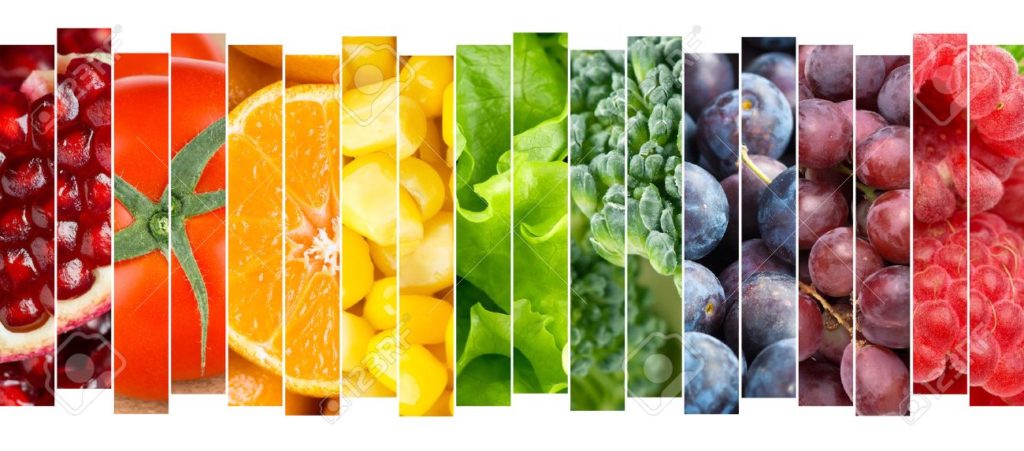
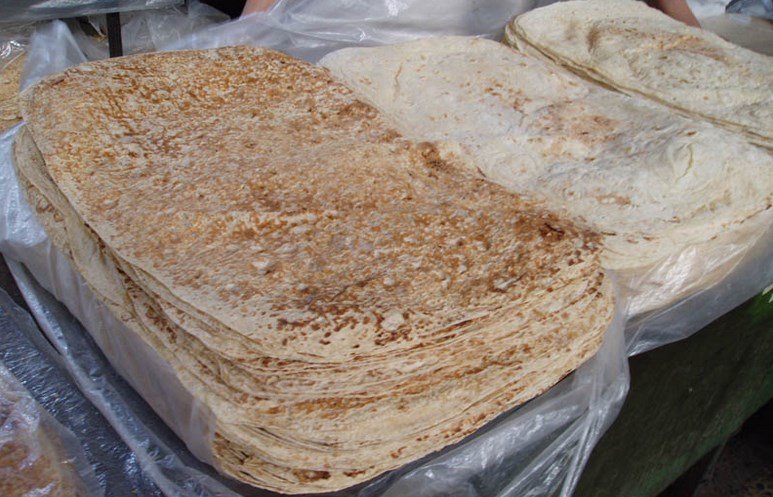
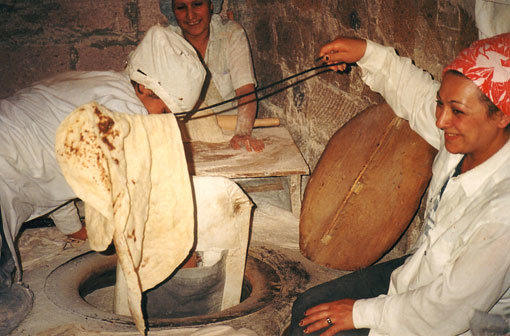
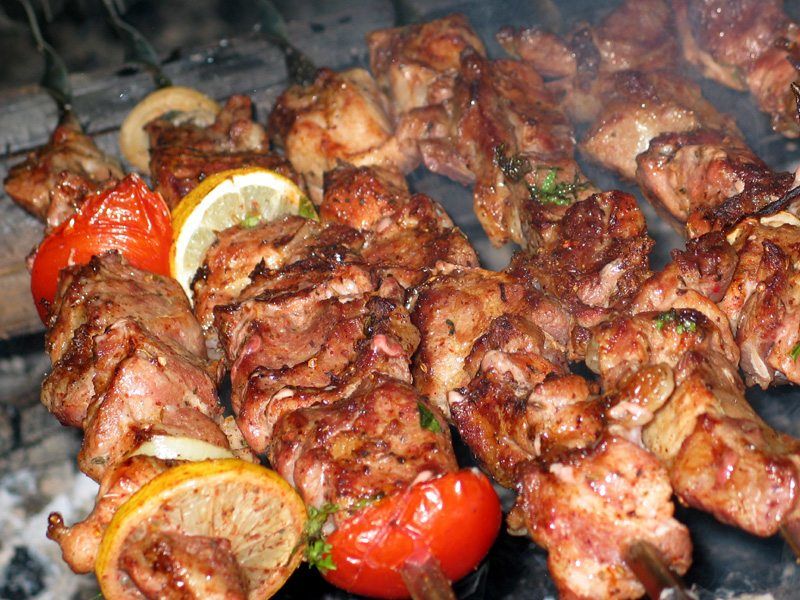
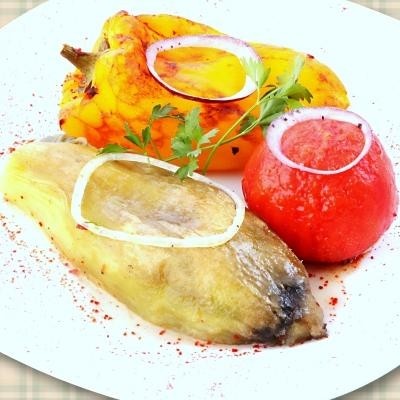
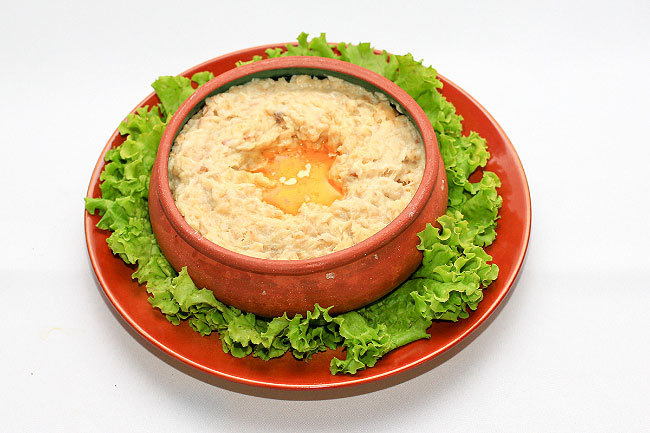
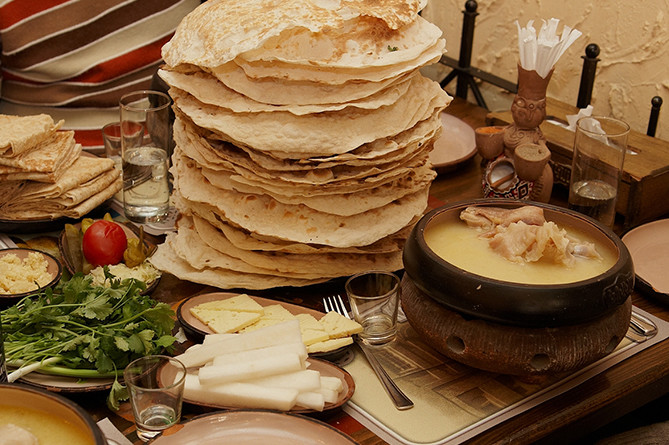


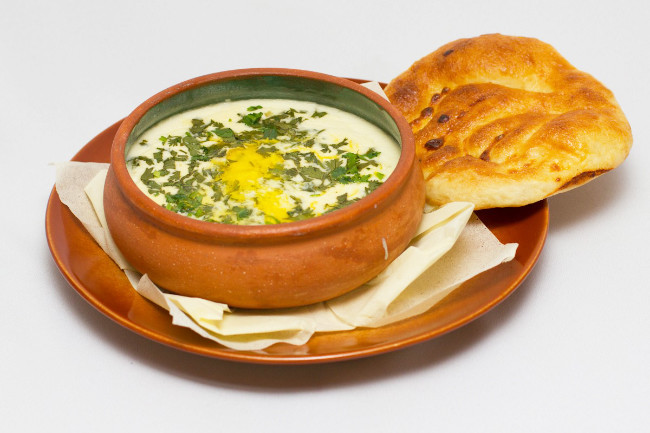
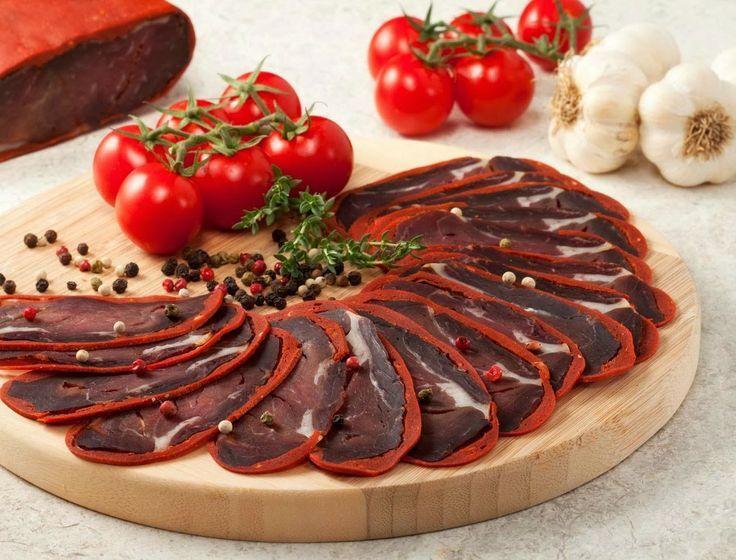

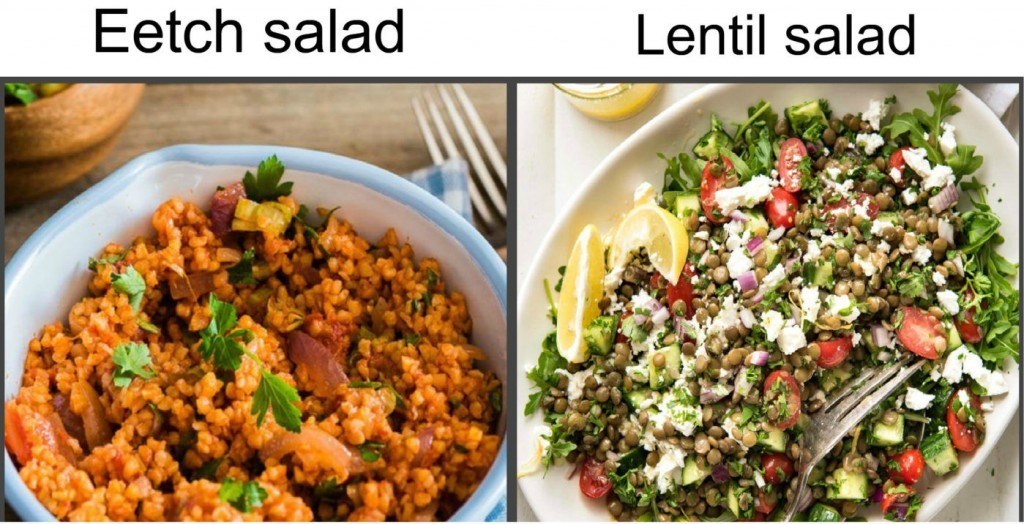







Leave a Comment